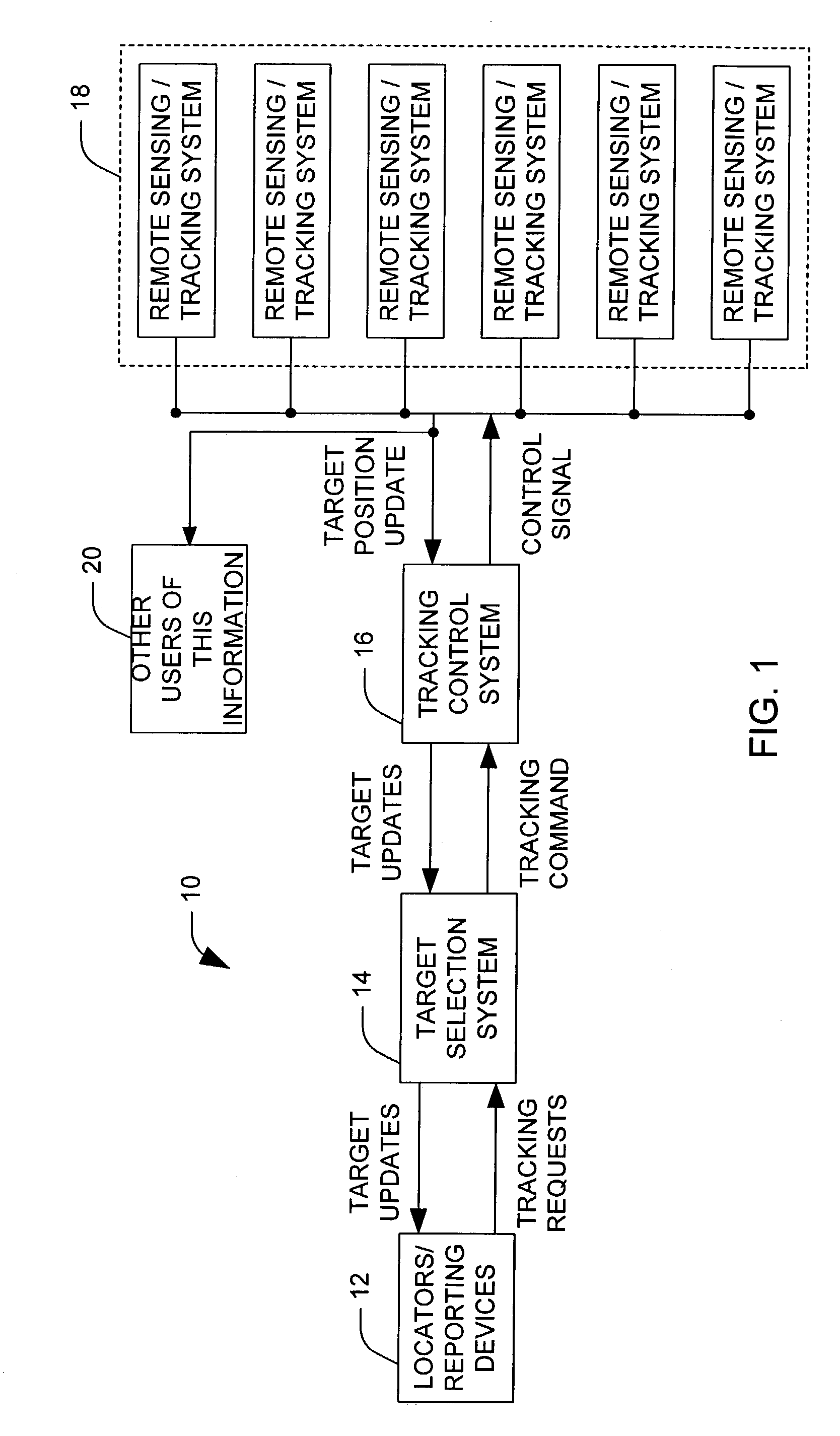Target acquisition and tracking system
a tracking system and target technology, applied in the field of information systems, can solve the problems of ineffective and/or inefficient at continuously updating the location of moving targets as time progresses, short-range sensors generally have difficulty tracking a target, and may be undesirable to follow or get too near a targ
- Summary
- Abstract
- Description
- Claims
- Application Information
AI Technical Summary
Benefits of technology
Problems solved by technology
Method used
Image
Examples
Embodiment Construction
[0018] The present invention relates to systems and methods for tracking one or more targets of interest (referred herein as the term “closed-loop tracking” of one or more targets of interest). A target finder (e.g., human target finder) finds, describes, and provides a report concerning targets of potential interest. A target selector (e.g., human target selector) selects at least one target of interest from a plurality of identified targets. A plurality of remote sensing / tracking systems are operative to track the at least one target of interest. A tracking control system schedules at least one of the remote sensing / tracking systems to track the at least one target of interest based on at least one tracking parameter. Using the information from the target selector as a “track initiate”, the remote sensing / tracking systems can find the target(s) of interest out of the (potentially) very large number of observable objects. Using the information (e.g., a record index key identifier) ...
PUM
 Login to View More
Login to View More Abstract
Description
Claims
Application Information
 Login to View More
Login to View More - R&D
- Intellectual Property
- Life Sciences
- Materials
- Tech Scout
- Unparalleled Data Quality
- Higher Quality Content
- 60% Fewer Hallucinations
Browse by: Latest US Patents, China's latest patents, Technical Efficacy Thesaurus, Application Domain, Technology Topic, Popular Technical Reports.
© 2025 PatSnap. All rights reserved.Legal|Privacy policy|Modern Slavery Act Transparency Statement|Sitemap|About US| Contact US: help@patsnap.com



